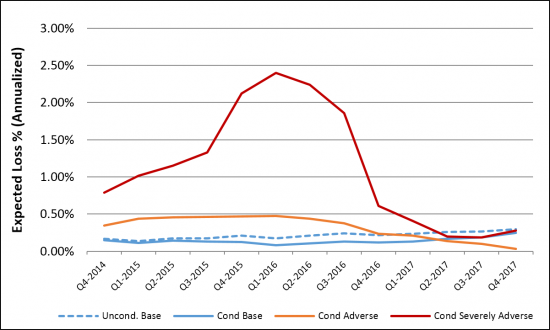STRESS TESTING
Determine the Size of Potential Losses Related to Possible Future Scenarios
The purpose of stress testing is to determine the size of potential losses related to possible future scenarios over a specified time period. The future scenario most often used in portfolio stress testing at financial institutions is the extreme change in the value of an important risk factor such as interest rate, exchange rate or credit spread. For example, a stress test calculation tells how much a credit portfolio may lose if there was a 4% rise in interest rate levels over the course of one year. Stress tests can identify the vulnerabilities in a portfolio to a variety of extreme events and are complementary to probabilistic methods such as economic capital.
In reality, banks are often required by regulators to run several specific types of scenarios. The first is to try to reproduce the effects of extreme historical events on a portfolio. The second is to create hypothetical one-off events that work from imagined future developments. The third type is a worst case scenario that asks, “What is the worst that can happen to the value of a portfolio over a specified period of time?”
Risk Integrated recommends the use of our proven risk platform, the Specialized Finance System (SFS), to perform portfolio stress tests. The SFS provides the data consolidation tools, the detailed risk models, and the raw computing power to run stress tests on tens of thousands of loans, building up the portfolio picture lease by lease and covenant by covenant. The granularity of the stress can be at any level required (e.g., at a national level, or differentiated by local geographies and sectors).
Importantly, the SFS allows the user to have complete understanding and control over the forecasts and risk parameters used in calculating the risk statistics.
Portfolio Stress Testing
Quarterly Expected Loss

9-Quarter Cumulative Loss Rates
| Assumptions | Cumulative 9-Quarter Loss |
|---|---|
| Conditional Base Case | 27 bps |
| Unconditional Base Case | 43 bps |
| Conditional Adverse Stress | 92 bps |
| Conditional Severely Adverse Stress | 338 bps |
